Posted: August 12, 2016
Contributing Authors: Ray Angers
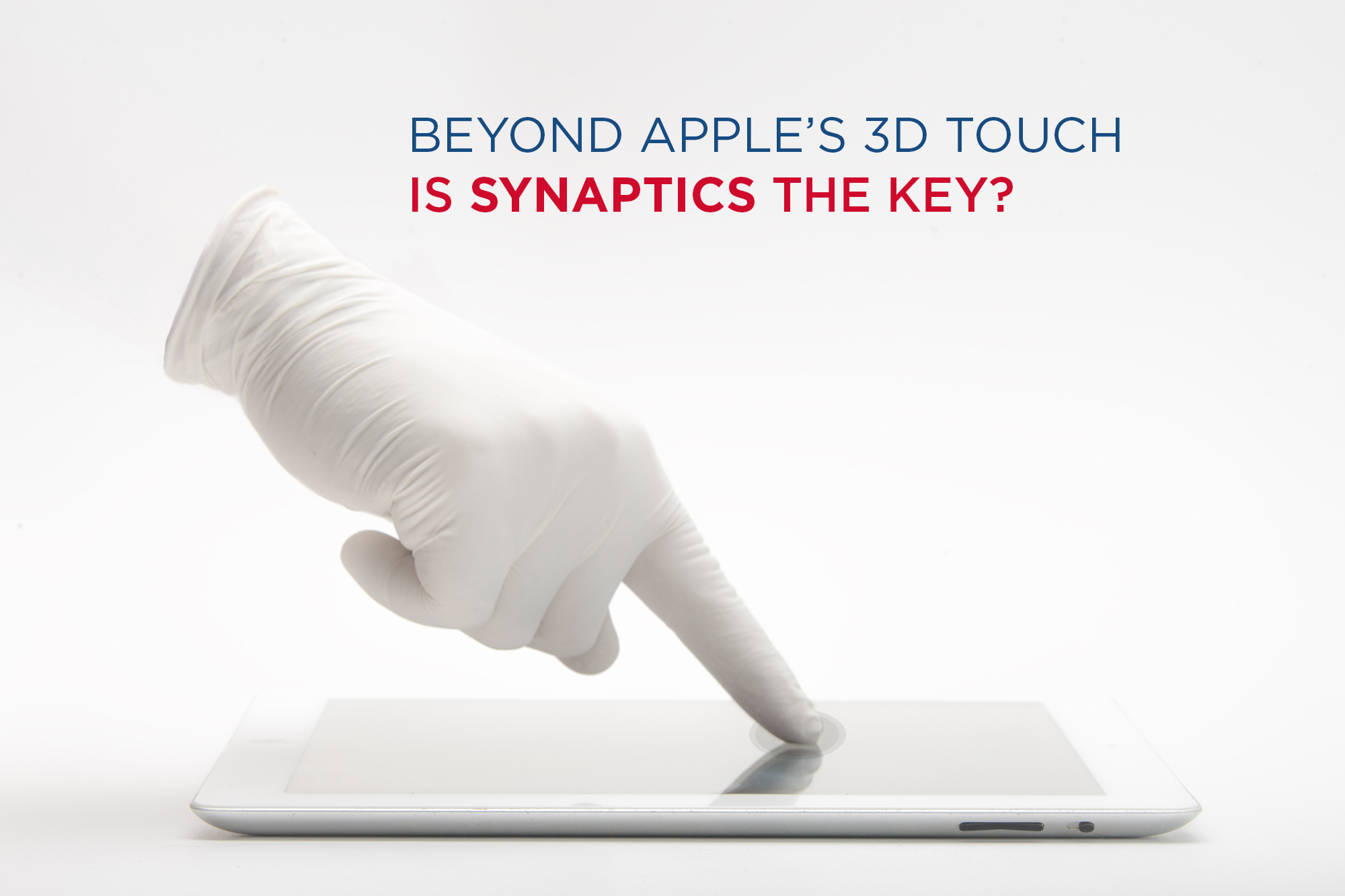
Last year we looked at the Force Touch technology on the Apple Watch including its construction and its capacitive sensing approach. Later in the year, Apple introduced 3D Touch on iPhone 6s and we have performed a similar analysis (report available soon in the Chipworks Store, please contact us). Since then, there have been many predictions on the rise of force touch adoption in smartphones in 2016. A year has passed and the reality strikes; so far, only the Apple iPhone 6s and 6s Plus, Huawei Mate S, and ZTE Axon Mini have incorporated pressure-sensitive display. Other phones rumored to be equipped with the force touch feature, namely the Samsung Galaxy S7 and Xiaomi Mi5, did not actually ship with such hardware.
Pressure-sensitive display is far from being a one-hit wonder gimmick
In April of this year, Google highlighted the Launcher Shortcut feature in its Android Nougat (Android 7.0) developer preview. The Launcher Shortcut enables the user to perform actions quicker by allowing them to potentially navigate to a specific part of an application by “pressing down” on the screen, similar to how Apple’s 3D Touch operates. Although the feature has been postponed to a future Android version and won’t be included in the Nougat release targeted for Q3 2016, it is a strong indication of Google’s intent to bring the feature into Android, encouraging Android phone manufacturers to incorporate pressure-sensitive display to enable a richer user interaction experience with their phones.
The sensing construction on iPhone 6s vs Apple Watch
Learning from our analysis on the Apple Watch and iPhone 6s 3D Touch, we know that Apple is implementing its own solution. While the sensing construction on the iPhone 6s is much different from the Apple Watch, both use capacitive sensing (i.e., detecting minute changes in capacitance due to change in distance) as the basis to detect the level of applied pressure. From our analysis, the iPhone 6s is coupling a capacitive sensing panel to an Analog Devices analog-to-digital converter (ADC) component, targeted for the medical imaging market, for its 3D Touch solution. This represents an interesting re-purposing of existing technology into a whole new industry. The figures below show the capacity sensing panel, the ADC component, and Chipworks’ test set-up for 3D Touch analysis (report available soon in the Chipworks Store, please contact us).
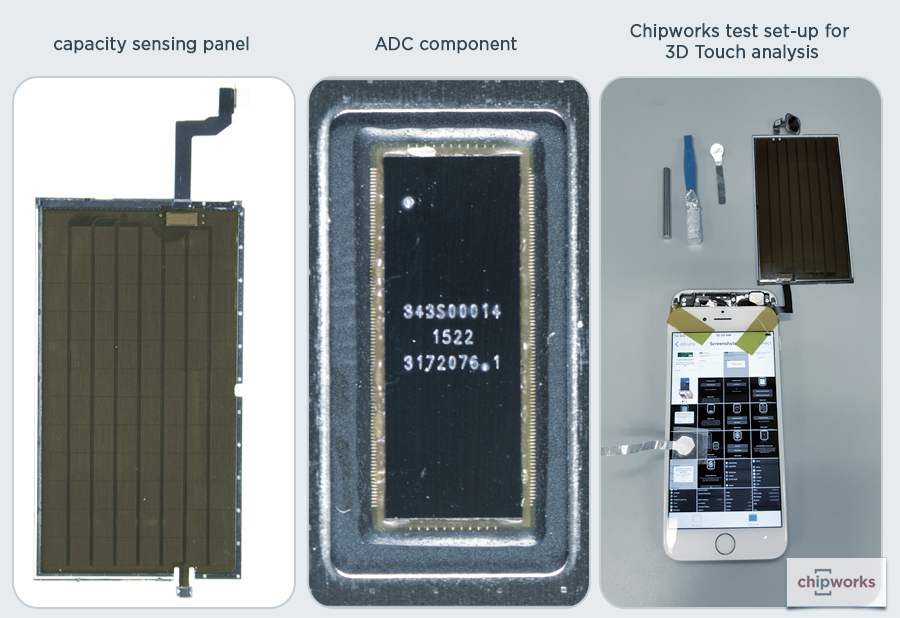
In addition to the report, TechInsights' Inside Technology allows you to easily access technical data on 1,000's of devices. It's a massive archive that makes finding competitive technical intelligence and design win information fast and easy so you don’t have to search multiple sources. In the example below, a search for 3D Touch information in our inventory allows you to identify the genealogy of a relevant component.
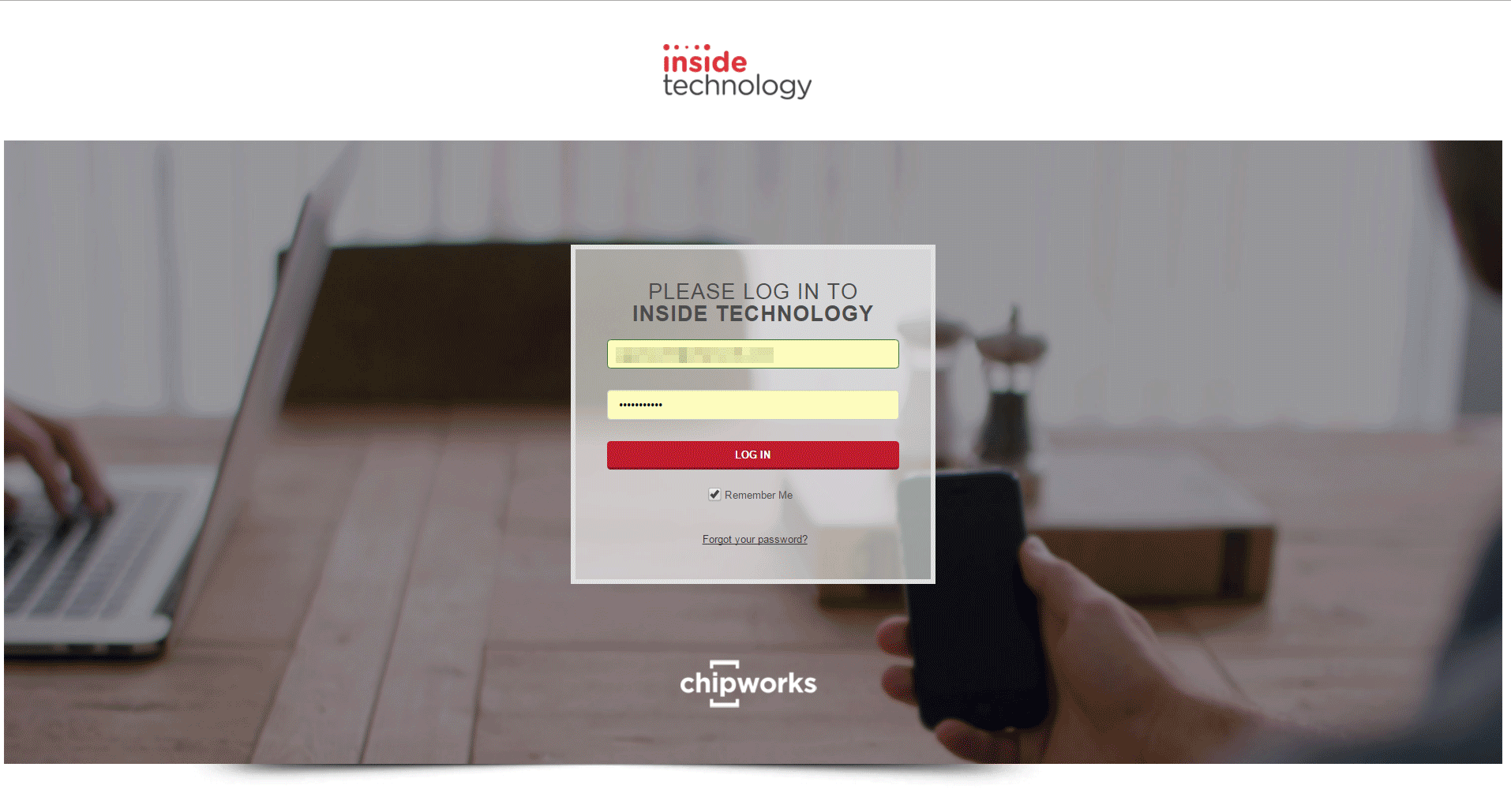
In addition to the report, TechInsights' Inside Technology allows you to easily access technical data on 1,000's of devices. It's a massive archive that makes finding competitive technical intelligence and design win information fast and easy so you don’t have to search multiple sources. In the example below, a search for 3D Touch information in our inventory allows you to identify the genealogy of a relevant component.
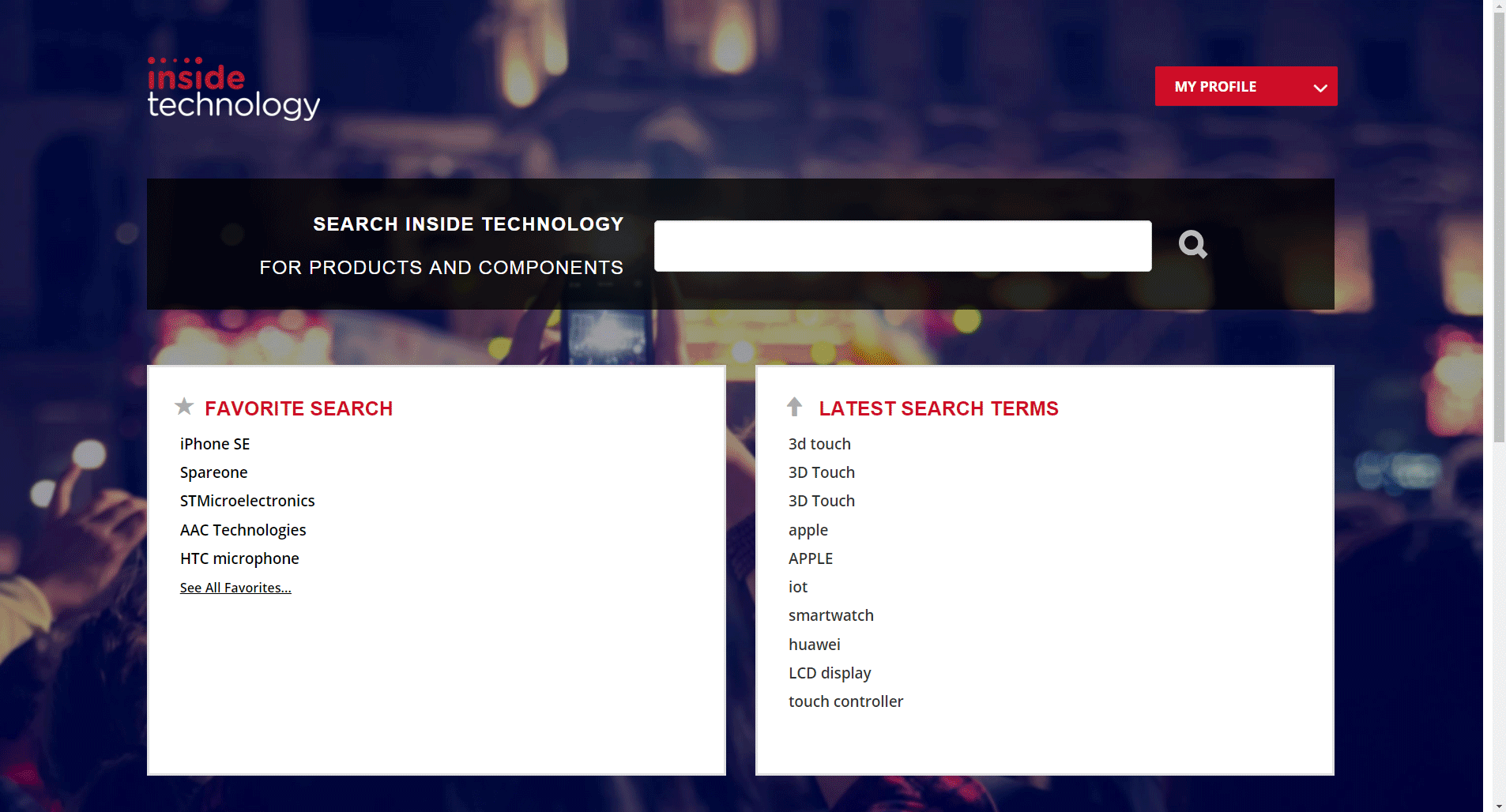
What solutions do other OEMs employ?
Synaptics’ ClearForce might be the answer. Synaptics’ ClearForce technology, introduced in the latter half of 2015, works with fingers as well as a stylus. It enables features such as press-to-zoom, press-to-scroll, line thickness control, function preview and selection. Synaptics has released a video showcasing how the technology could be used on phones. Synaptics’ ClearForce was suspected to be used in Huawei Mate S as well as the ZTE Axon Mini, but the ClearForce features haven’t been utilized to the fullest, as the “peek-and-pop” or “function preview and selection” is still the most common implementation in phones. TechInsights has the Huawei Mate S phone in-house and can confirm the hardware driving the force sensing function. The latest phone incorporating ClearForce is Meizu’s flagship smartphone, the Pro 6.
Following Meizu, other phones still in development rumored to incorporate pressure-sensitive display include Samsung’s Galaxy S8 and Galaxy Note 6, HTC-Google’s Nexus, and Xiaomi’s Mi5s and Mi Note 2. Xiaomi has used Synaptics’ ClearPad SideTouch technology in its Mi4C to allow scrolling and tapping from the phone edges, thus it might adopt the ClearForce solution in upcoming phones. Samsung is also rumored to have struck a deal with Synaptics for the ClearForce technology.
Force sensing technology is not a new concept
While Apple can be considered the first to introduce pressure-sensitive touch to smartphones and wearables, force sensing technology is not a new concept. In its press release announcing the ClearForce Technology, Synaptics claims to have “a rich history in force technology dating back to 1996” (http://www.synaptics.com/company/news/clearforce-for-smartphones). Using Chipworks’ Patent Analytics (CPA) tool, we have taken a patent landscape look at Synaptics’ current active US patent portfolio to gain some insight into its innovation in the pressure sensing domain.
A closer look at Synaptics' current active US patent portfolio
The patent landscape contains 813 active US granted patents and applications extracted from Innography. Each patent is represented as a colored dot in the patent landscape. The CPA tool algorithmically groups similar patents to form peaks. The peaks are identified with three words of the highest frequency of occurrence. Using a simple keyword search in Innography, we were able to identify 98 patents and applications potentially related to pressure-sensitive touch, indicated in red and dark blue in the landscape. Observe that while the red patents are scattered at the top half of the landscape related to capacitive sensing, 18 dark blue patents/applications are concentrated at the “force, surface, input” peak. The 8 aqua colored patents/applications are also related to “force, surface, input”, but were not identified as related to pressure-sensitive touch in Innography’s keyword search.
TechInsights has taken a look at this group of 26 and confirmed that they are all related to pressure or force sensing. Eleven of these were granted patents and 15 were applications with priority dates ranging from 2000 to 2014. Two interesting exemplary patents in this landscape region are US patent 9,377,888, which describes an input device that can detect the individual force levels applied to a surface by the individual objects placed on the surface, and US patent application 2012/0319987, which describes how to perform a first-time calibration in a system where a force sensor senses the force applied to an input surface by a haptic mechanism. Both are relevant to mobile devices equipped with pressure sensing.
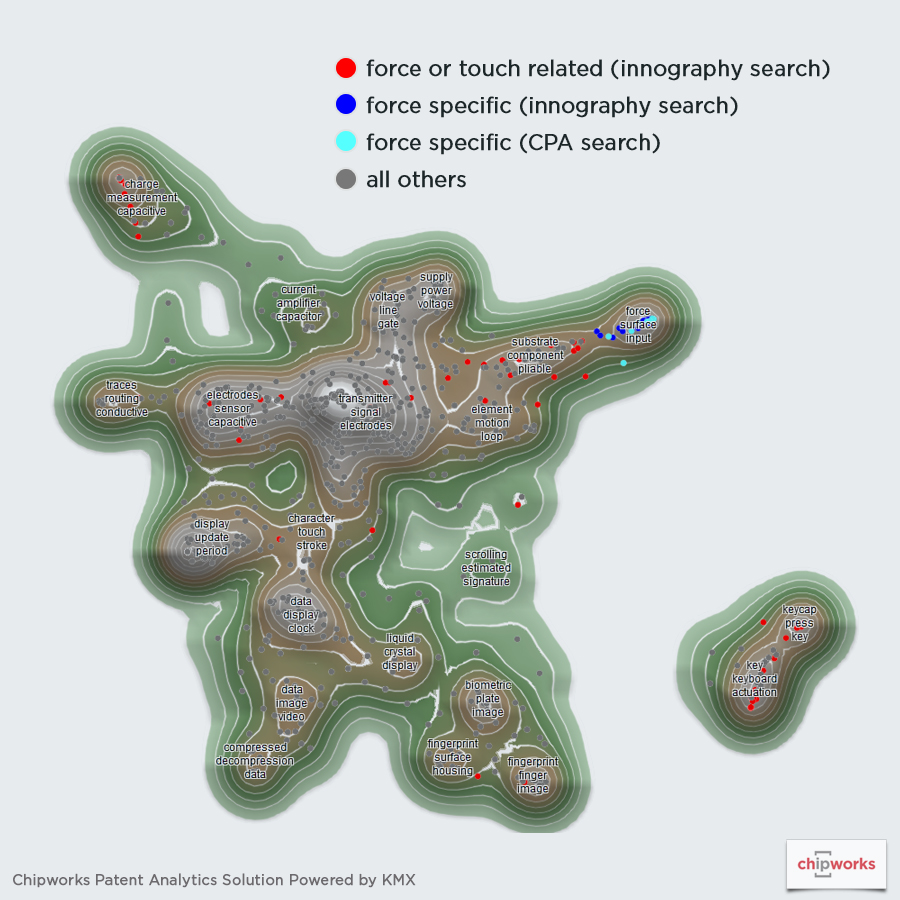
At this point, Synaptics does not appear to be in litigation with Apple, based on information extracted from Innography. In fact, there are rumors that Apple might be licensing Synaptics’ display driver in the new iPhone 7. Other companies have, however, already started to target Apple’s 3D Touch. Specifically, Elan Microelectronics is in litigation with Apple on US patent 7,274,353 titled “Capacitive touchpad integrated with key and handwriting functions”, Immersion, a company specializing in touch sensing, is also suing Apple on multiple haptic feedback related patents. With other smartphone OEMs lining up to include the pressure sensing feature, we might expect to see more activity in this area.









